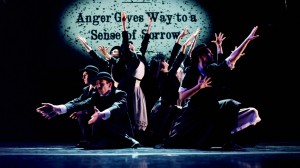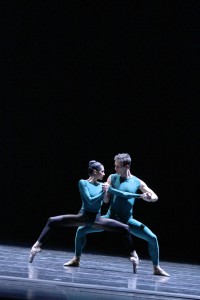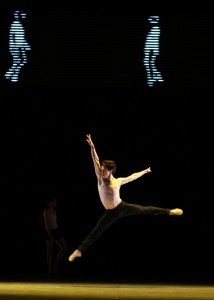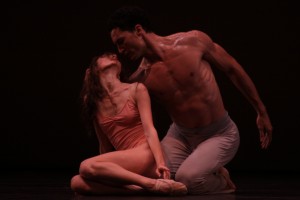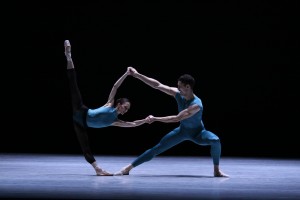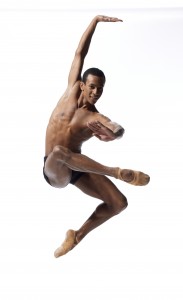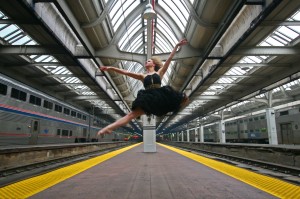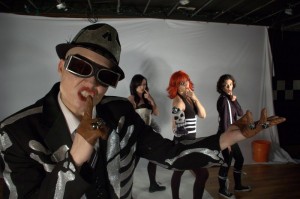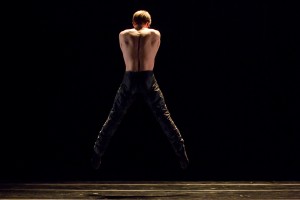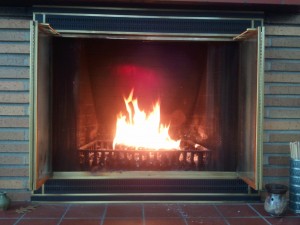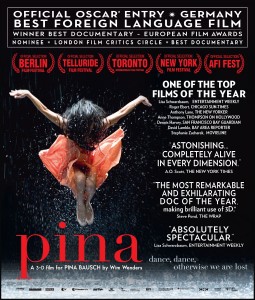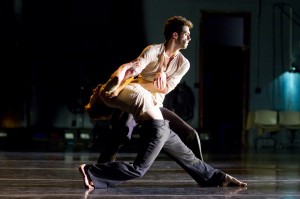This Thursday night, instead of watching Leno or Letterman or Colbert, at 10:30 pm turn on WTTW Channel 11. You won’t be sorry. Our local PBS affiliate will premiere Christopher Kai Olsen’s Beneath the White City Lights: The Making of an American Story Ballet. This new dance documentary offers a behind-the-scenes look at rehearsals and preparation for Thodos Dance Chicago‘s (TDC) choreographic take on the 1893 Columbian Exposition, which premiered at the Harris Theater in 2011. Inspired by historical events surrounding the fair and Chicago’s architecture, Thodos founder Melissa Thodos and gal pal, Broadway star Ann Reinking developed a story board and the project took off from there. To create a multimedia experience, they enlisted the help of Emmy-winning filmmaker Chris Olsen to produce a series of short, video projections to aid in moving the plot along. (Olsen previously worked with Thodos, Reinking and company for the documentary Fosse: A Prelude.) Once immersed in rehearsals, Olsen found he didn’t want to stop. “I wanted to understand the process,” he says. “I wanted to make sure I was fully ingesting it. Rehearsals would end and I’d keep shooting. I just wouldn’t leave.” He ended up with almost 100 hours of footage.
Olsen decided to take what he’d seen and piece it together. The result is a wonderful 30-minute film showing the dancing, directing and dedication behind the creation of The White City: Chicago’s Columbian Exposition of 1893. I spoke with Olsen (in sleep-deprived, post-production mode) over the phone about the project and the PBS premiere.
Are you excited about the premiere?
Heck yes!
This isn’t your first premiere, so what makes this one so special?
From the very first meeting about this project all the way to now was a big adventure. It’s been an exciting year. This is true independent cinema. It’s rewarding to get to this point and have the support of PBS or, in this case, WTTW to be able to air it is remarkable. For it to be received by the audience you were hoping to show it to is really important. I want people to see the (live) show, but if they can’t…I at least want them to see parts of it.
You’ve worked with Melissa and Ann before. How did this project come about?
Melissa reached out and said she had another project. No matter what it had been, I wanted to be on board. I have a love of that specific time period. I’m a huge Chicago architecture buff. My Dad’s an architect. And, the stories surrounding the Chicago World’s Fair were phenomenal, so when she said she had an idea about doing a story ballet about the Columbian Exposition, before she could finish the sentence, I said, ‘I’m in!’
Is it difficult to shoot dance, or is there just a learning curve?
I don’t know if it’s hard. I’ve always been sort of a portrait person…portraits in motion, if you will. I love being able to capture someone in the lens, but I’ve never been happy with just a single frame. It goes to my appreciation for animation –the idea of motion over time with design. The same eye, I apply with dancing. I look for what’s cool, that moment that captures the soul of the moment. That’s how I shoot. Dance gave me a subject that matched better for how I liked to shoot. It was fun to be able to find that.
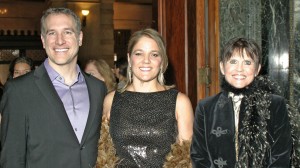
Chris Olsen, Melissa Thodos & Ann Reinking at Thodos Dance Chicago's 20th Anniversary Gala. Photo by Bob Mihlfried.
With White City, you were originally on board, but was it just for the projections or were you always going to be filming a documentary?
No, I didn’t set out to make a documentary. I set out to document. The result is a documentary. Honestly, that’s how almost every project I do starts. I’m not necessarily aiming towards any one end goal, the art for me is the process of capturing and creating, coordinating and working with the other artists is the art. Everything I’m capturing is the evidence. I loved the idea from the very first second, it was exciting and interesting and you knew it was special. The whole process was like that. I was in the rehearsals, because I wanted to understand the process to help me with the 14 short films I produced. To be able to be there and immerse myself was a huge part of my creative process…and that doesn’t require a camera, but I brought one anyway. I wanted to record it. I wanted to make sure I was fully ingesting it. I like being able to absorb thing through the camera. I’m sort of fixing my perspective and be able to refer to it later, like taking visual notes. That was all part of my process, my creative approach. The whole time I was gathering information. Towards the end, I knew I had the potential with all this material, there was a storyline in my head that was evolving in a way I could piece it together.
Can you walk me through your thought process while making the documentary?
My original hope was that you’d have a mix of footage that gave you a good idea of the scope of the work showing you what went into it. A peek behind. A place only dancers ever see. I think people have a fixed idea of what a documentary is. And I’m not a very traditional documentary filmmaker, but the enjoyment I get out of interpreting portraits and trying to capture that moment of light or that spark of energy, that creativity…it’s about a perspective on an event. The trick is how do you create something that is compelling without giving away the farm.
When it airs on the 23rd, are you going to watch it?
Yes! I’m very excited to be able to TiVo my own show. I’ll still watch it live, but I’m going to record it.
Are you nervous?
Yeah, but it’s a good nervous. Every since we got the air date confirmed, I’ve been absolutely nervous and giddy. The whole reason why we do what we do as artists is to connect with other people and to share ideas. Finding that path with your audience is sometimes the hardest challenge. How do you speak to the people that you’re hoping to reach in a way that’s easy for them to see? I love PBS’ mission. I love that arts outreach is part of who I am. There is no better vehicle I could’ve asked for. You’ve gotta be careful what you wish for, because you just might get it – and I got it!
Beneath the White City Lights: The Making of an American Story Ballet airs Thursday, Feb 23rd at 10:30 pm on WTTW Channel 11

